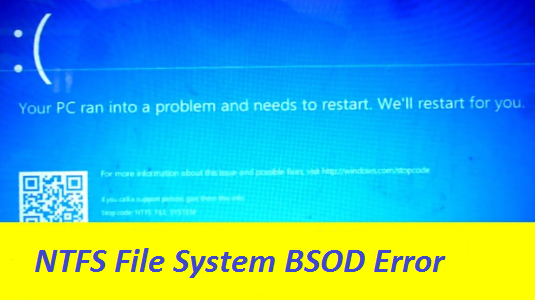NTFS is short for NT file system or New Technology File System format. This file system plays a crucial role in Windows OS. It is used for storing and retrieving files on hard disk drives (HDDs) and solid-state drives (SSDs).
This file system offers a number of benefits such as it allow file compression which ultimately increase the storage space. Besides, it focuses on the consistency of the file system so that in an event like power loss or system failure, you can quickly restore data.
It’s pertinent to mention it was introduced by Microsoft with the release of Windows NT 3.1; and till now NTFS is still the major file system format used in Windows Systems. So without this, your OS won’t be able to perform a number of tasks such as storing or retrieving files or finding files in a drive efficiently. So it’s quite clear you need to keep this file absolutely intact to prevent generic troubles while performing normal tasks or operation on Windows. And if there’s something wrong with this file, you may encounter errors. One instance of such error is NTFS File System BSOD Error. This error sometimes displays 0x00000024 value.
Since it’s a BSOD Error and hence can be categorized as critical error. As per the user’s report, this error usually occurs during the startup of Windows 11/10/8/7. So you won’t be able to run your PC normally once the error appears. Such error indicates a lot of flaws in your system such as bad/ corrupt system file or obsolete device drivers. But apart from these two factors there are a number of different causes that may lead to this error. Some of the possible factors have been listed below:
#. Corrupted Hard Drive
Hard drives are prone to physical issues, like mechanical failures and read/write head issues. So if you hard drive becomes physically damaged, you may encounter this error.
#. Lack of disk space
If your system drive is full of data it may lead to the above mention error.
#. Virus or Malware Infection
Your system can malfunction if it gets corrupted due to malware or virus infection. Such infections can come from external sources during file transfers, unreliable download and do on.
These were some of the basic reasons to face the above mention error, but thankfully it is solvable. We have collected some of the tried and tested methods to deal with the error.
Try these fixes for NTFS File System BSOD Error
Method 1: Scan your PC for Malware
In the first method we suggest you to scan your PC for malware. To do so you can use the Windows Security utility. Here’s how:
Step 1: Open System Settings and navigate to Update & Security
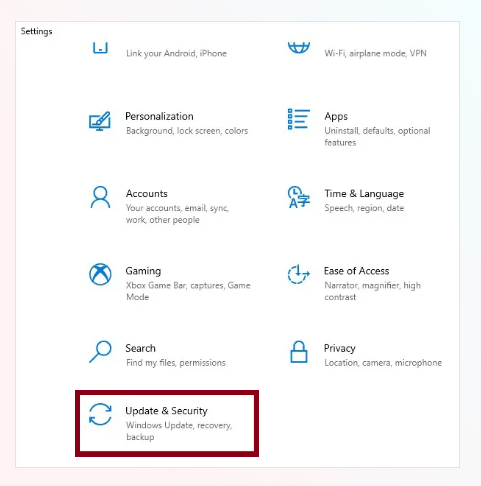
Step 2: Then go to Windows Security and open it
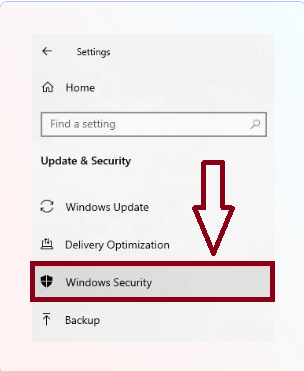
Step 3: Then move to the Virus & threat protection on the right panel
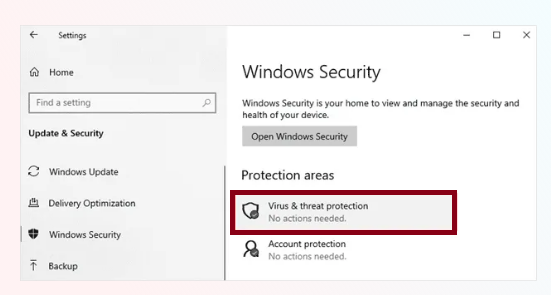
Step 4: Then follow the on-screen instructions to see if the issue resolved or not
Method 2: Check and Clear Disk Space
In this method, you are suggested to Check and Clear Disk Space to get paste the error, to do so use the following:
Step 1: Enter Windows Safe Mode, use Windows + S keys to open the Search box , type Disk Cleanup and press Enter
Step 2: In the Disk Cleanup Window, select the disk drive you want to cleanup and tap the OK button
Step 3: Then check the types of files you want to clean in the list and tap on the Clean up System Files
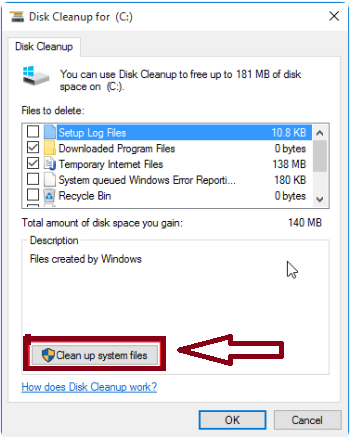
Step 4: After returning to the Disk Cleanup window, tap the OK button again
Step 5: Navigate to System Disk Cleanup window, tap OK button and confirm this action, wait for the cleanup of this process to complete.
Method 3: Run Windows Startup Repair
Running Windows Startup Repair is a prominent way to resolve BSOD Errors, to proceed with the method use the following steps:
Step 1: Right-click Start and click Settings
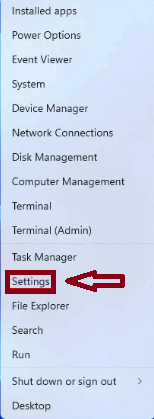
Step 2: Click Recovery
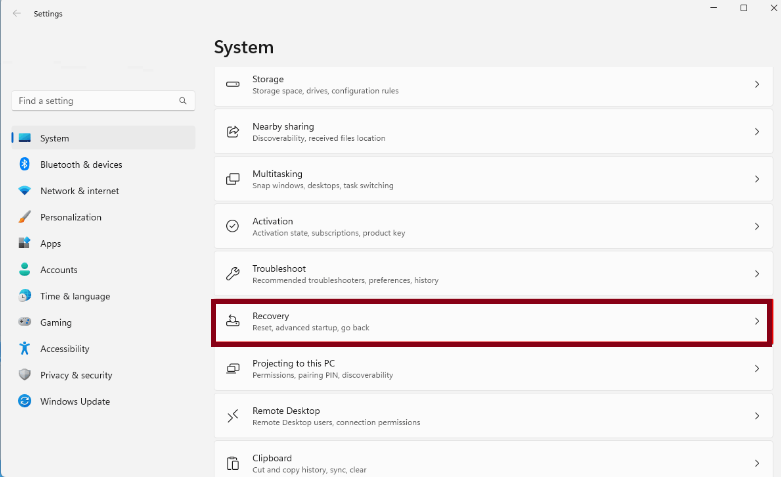
Step 3: Then Click Restart Now > Click Troubleshoot
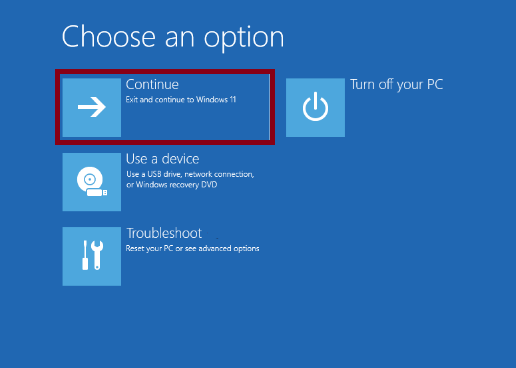
Step 4: Click Startup Repair > if you don’t have this option, you may need to boot into WinRE using your installation media instead.
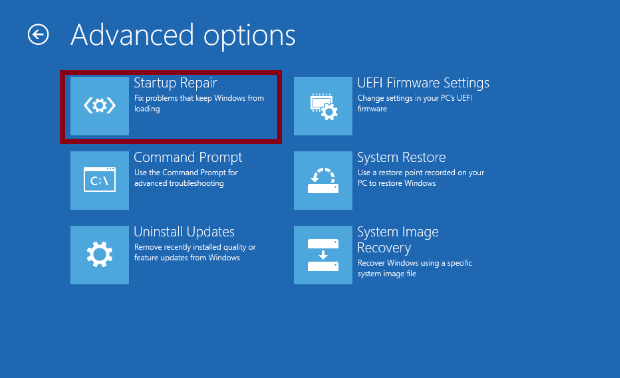
Step 4: Choose your OS
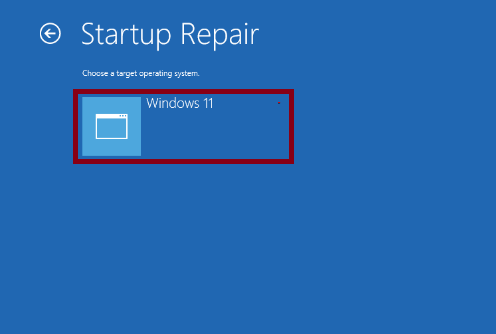
Method 4: Perform SFC Scan
Windows provides so many in-built tools; SFC Scan is one of them. This in-built tool is capable for scanning your system files thoroughly. In order to get started with this solution, use the following:
Step 1: In Windows Search type in cmd to open Command Prompt and run it as an administrator
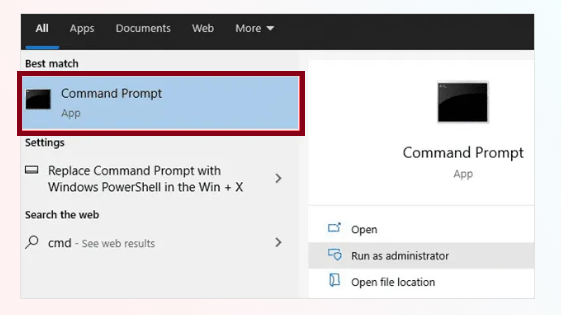
Step 2: Then click Yes to open Command Prompt > On the Command Prompt screen, type in sfc/scannow and press Enter key:
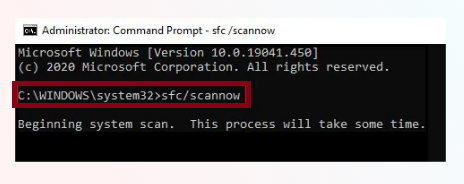
Step 3: This process will take some time to check the corrupt system files once it’s done see if the issue resolved or not.
Method 5: Check System Drive for Errors
In order to check the System Drive, Windows provides an in-built tool called CHKDSK . This utility has wide range of uses. You can use the following steps to run the tool.
Step 1: Right-click Start and click Terminal (Admin)
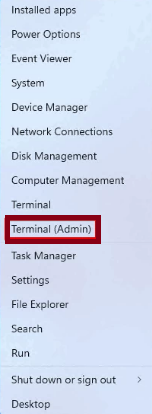
Step 2: Then type in chkdsk *: /r > Replace * with the drive letter of the disk that’s experiencing issues > Then press Enter to run the command
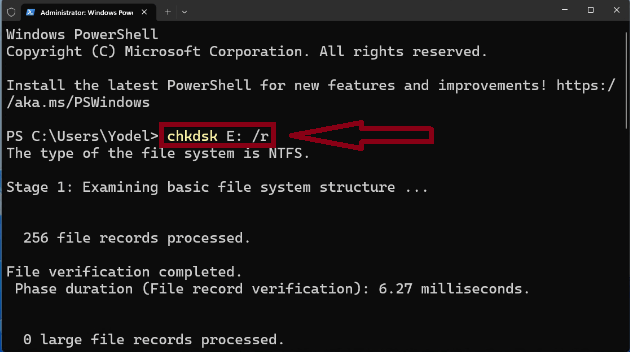
Method 6: Update Device Driver
If you are running outdated device drivers, it is one of the major reasons for facing the above mention error. So ensure to update your device drivers.
Step 1: Open Device Manager and go to Display Adapters
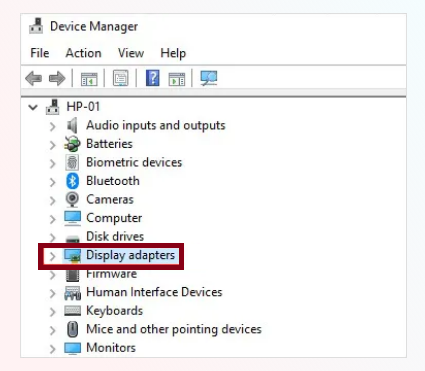
Step 2: Then expand Display Adapters and select the problematic driver > Right-click on the driver and select Update driver from the available options.
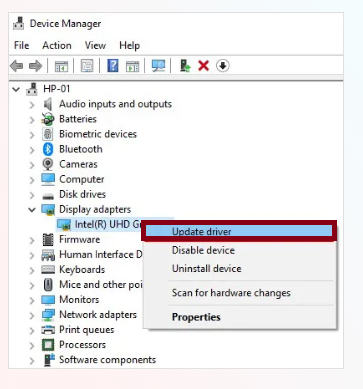
Step 3: On the next prompt, click Search automatically for drivers
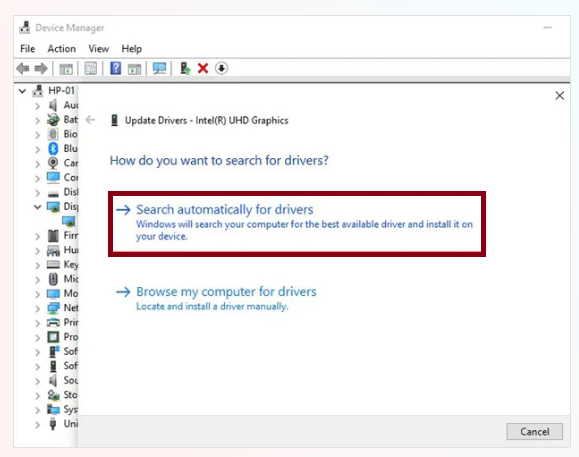
Step 4: Now Windows will start searching for an updated version of the drivers.
Note: You may also Update driver through Windows Update. Follow given steps to do so:
Step 1: Open System Settings and follow Update & Security > Windows Update
Step 2: Check for the latest updates available > if the updates are available, click “Install Now” and then Restart your PC.
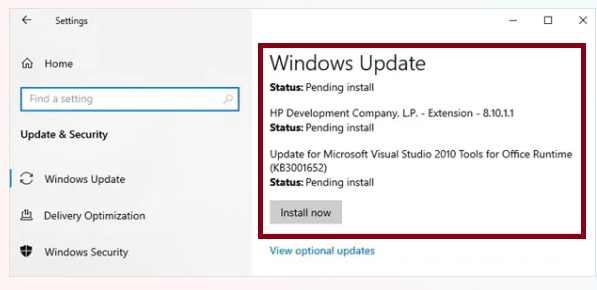
Method 7: Remove BitDefender and/or Webroot
Sometimes third party apps may also trigger the NTFS File System BSOD Error, so it is suggested to uninstall the third party apps if you have any.
Here we have taken BitDefender and/or Webroot for demonstration purpose:
Step 1: Open System Settings and navigate to Apps
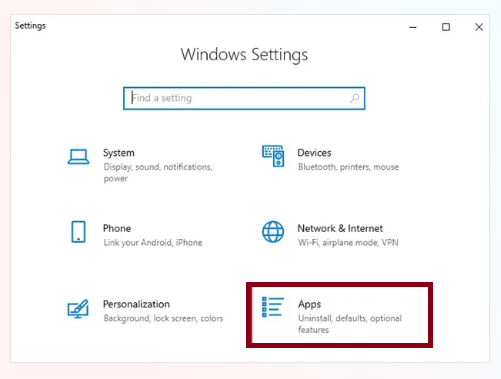
Step 2: Find if you have BitDefender or Webroot installed on your PC > If it is installed in your PC, right-click on it to Uninstall
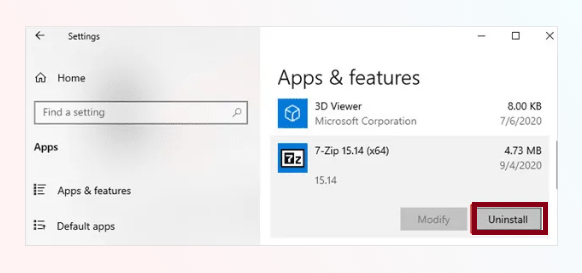
Step 3: Once done then Restart your PC
Method 8: Run Windows Memory Diagnostic Tool
BSOD Errors are likely to happen due to issues with the RAM. So ensure to run Windows Memory Diagnostic Tool.
Here’s how:
Step 1: Enable Windows Safe Mode with Networking; use Windows + R keys to open Run Window, type mdsched and press Enter
Step 2: In the Windows Memory Diagnostic window, tap Restart now and check for problems (recommended) and restart your PC to wait for this process to complete.
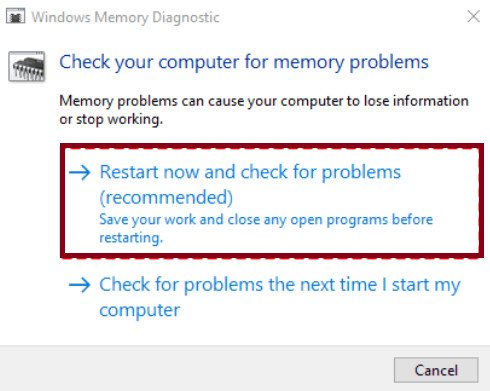
Method 9: Rebuild the Boot Manager
When there is an issue with the MBR (Master Boot Record) and (BCD) Boot Configuration Data, it may trigger the above mention error. So you need to rebuild it.
Here’ show:
Step 1: Enter the Windows Recovery Environment and tap Troubleshoot -> Advanced options- > Command Prompt
Step 2: Now enter the following commands and press Enter after each one:
bootrec.exe /fixmbr
bootrec.exe /fixboot
bootrec /scanos
bootrec.exe /rebuildbcd
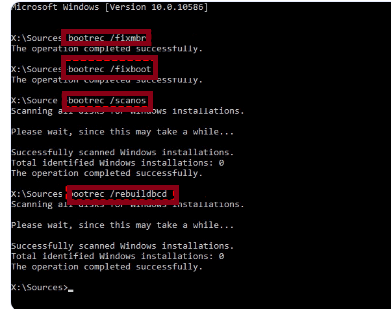
Method 10: Run Windows 10 Troubleshooter
Running Windows troubleshooter may also resolve the current BSOD Error, to proceed use the following:
Step 1: Enable Window Safe Mode with Networking, use Windows + S keys to open Search box then type Troubleshoot and press Enter
Step 2: Now confirm the Troubleshoot tab in the left panel and find and tap the Additional troubleshooters button in the right panel
Step 3: In the Additional troubleshooters window, tap Blue Screen under Find and fix other problems, then tap the Run the troubleshooter button
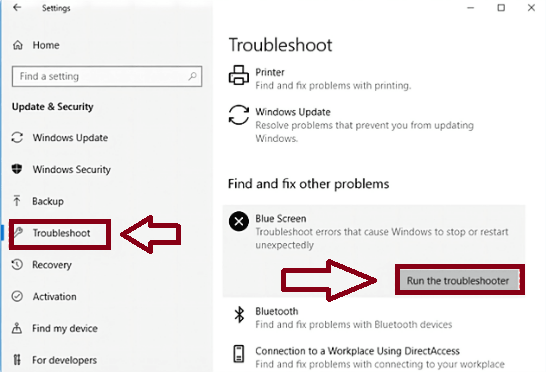
Step 4: Wait for some time and see if the issue resolved or not
Method 11: Reset this PC
If none of the above mentioned methods works for you we suggest you to reset Windows. To do so use the following:
Step 1: Enter the Windows Recovery Environment and click Troubleshoot > Reset This PC
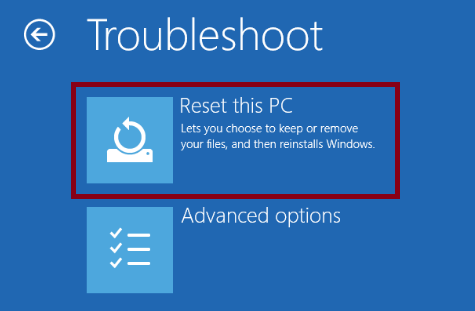
Step 2: You can choose to keep my files or Remove Everything according to your needs > here it isrecommended to choose the first option
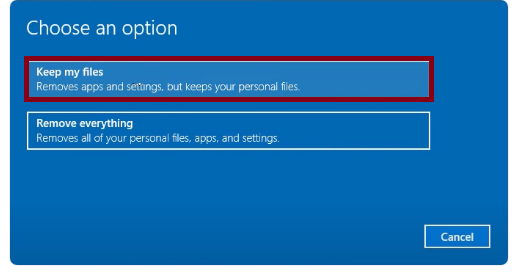
Step 3: Finally tap the Reset button and wait for the PC to finish resetting automatically and reboot your PC.
Final Thoughts!
These were some of the tried and tested methods to resolve NTFS File System BSOD Error. Its pertinent to mention all the methods are effective but the only issue is manual methods is lengthy and time consuming. But don’t worry, you can choose an alternative. We recommended you an automatic PC Repair Tool to resolve the NTFS File System BSOD Error. This professional tool is capable for fixing this BSOD Error; it will thoroughly scan your repositories and replace the corrupt files with intact one. So you can choose either of the mentioned ways as per your choice to resolve the error.
